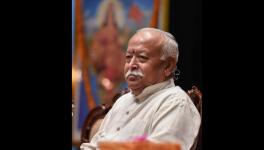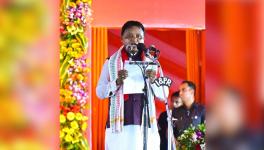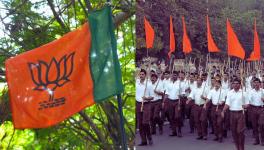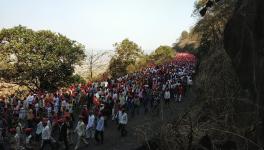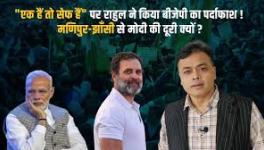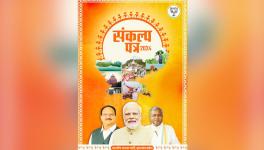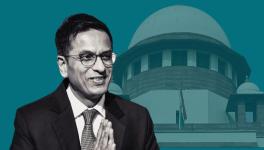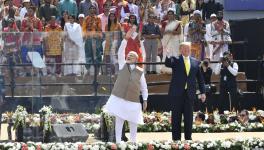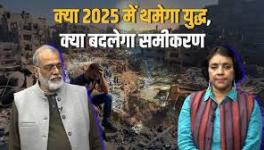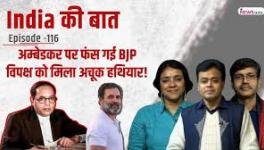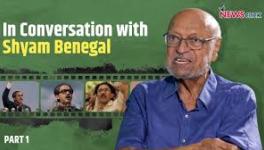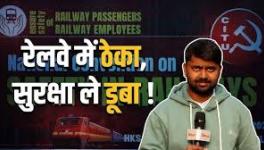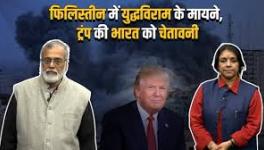A Defining Image That has Effectively Ended the Rule of Mehbooba Mufti
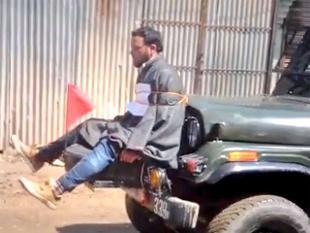
When Lt General H.S. Panag, an Army officer with a long and distinguished career, told The Citizen in an interview that the photograph of the 24 year old shawl weaver Farooq Ahmad Dar tied to the front of an Army jeep as a human shield against stone pelters was a ‘defining image’ with global dimensions, he could not have been more right. As just within days the New York Times came out with an editorial ‘Cruelty and Cowardice in Kashmir’ based on this image, speaking of this incident as a “new low”.
The point is not whether the NYT is right, or wrong. The point is that this photograph---like that of the little Syrian boy swept ashore, or of the young Afghan girl with piercing eyes, or of the Palestinian man trying to protect his child with the next image showing him lying dead with his boy crying over him----had the potential to become a defining image of the Army of democratic India in Kashmir at this point in time. NYT , along with others, took it as such and wrote an editorial stating, “India’s army chief, Gen. Bipin Rawat, has vowed action against those responsible for tying Mr. Dar to the jeep. But he has also thundered against Kashmir’s stone-throwing youth and separatist militants, saying in February: “They may survive today, but we will get them tomorrow. Our relentless operations will continue.”
In the midst of escalating protests, with schoolgirls having joined the protests along with the male students across the state Jammu and Kashmir Chief Minister Mehbooba Mufti met Prime Minister Narendra Modi when she went to Delhi to attend a Niti Aayog meeting. She reportedly said a lot, as per her own briefings, but the Prime Minister said little. Or perhaps nothing at all, as not a word has appeared except for a line that he was not against talks provided there was peace, and the protests stopped. At the larger Niti Aayog meeting he did ask the other CMs to ensure the integration of the Kashmiris into the Indian mainstream, again according to reports, but did not say anything in real terms about Mufti’s plea to look after the safety and security of the Kashmiri students.
In short, PM Modi did not give CM Mufti a sentence she could cling on to, and survive. She was told to bring down the violence, that is quite beyond her means now. She went from Srinagar saying she would persuade the PM to begin a political dialogue. She returned from Delhi saying quite the opposite, ““I understand that the coming two-three months are crucial for us. I want to say that you will find the situation of Jammu and Kashmir changed. We will first restore normalcy and then talks can be initiated.”It is clear that despite the unwanted global media attention, the government at the centre is not going to review its ‘military’ policy in Kashmir. And replace it even marginally with the dialogue that all civil society delegations, including one led by former BJP Minister and senior leader Yashwant Sinha, have been demanding. In fact Sinha has admtted in a recent interview that he had asked for an appointment with the PM after visiting the state twice in recent weeks, but is still waiting. Another clear indication that the Prime Minister is not interested in even listening to Sinha despite the many recommendations made in his report, the foremost being the start of a political dialogue.
There has been a thinking in sections of the establishment, including under the Congress government that was visible in the last five years of the Manmohan Singh government, that Kashmir can be quelled with force, and that there should be no give insofar as a dialogue with protestors, stone pelters, separatists, ideologues, pro-Pakistan elements and others in the state is concerned. This roughly translates in todays Kashmir, pushed to the brink as it were by the combined policies of successive government in Delhi and Srinagar, to : no talks at all.
Unlike the Congress that vacillated on formulating an effective Kashmir policy even at the best of times, and very unlike its own former Prime Minister Atal Bihari Vajpayee who showed no hesitation in opening a dialogue with all sections, the BJP government today is clear that it will follow only the military option. And that the Kashmiri’s once holed in the Valley---with attacks on them increasing in other states of India---will eventually give in, as fatigue and the casualties that are inevitable will become a deterrent.
CM Mufti knows that there will be no ‘give’ by the central government. This has been made clear to her. And while the centre does not want Presidents rule as it would prefer to have a buffer through the PDP for some more time, it is quite prepared to do so now if Mufti decides to resign. It has been really left to her, as PM Modi did not bother to dole out assurances that she could peddle at home this time around. In fact, there is little that she has brought back to Srinagar that she could use to convince her own waiting legislators.
As always Mehbooba Mufti has missed the bus. She missed the first bus when she delayed becoming the CM to a point where she finally took the post from a position of weakness, virtually crawling into the seat after her father Mufti Mohammad Sayeed’s demise. She was unable to negotiate, and the BJP called her little bluff with ease.
She has missed the second bus now. If Mehbooba Mufti had resigned in 2016 when the pellet guns were used on the Kashmiris she might have been able to influence a calmer Kashmir policy. And even if the BJP had chosen not to listen to her, she would have acquired a moral status to be effective in the politics of the state to a point where she and the PDP would have risen in popularity, thereby filling ---at least to some extent---a vacuum of leadership that is so evident today. Several of her colleagues advised her to resign, but Mufti was clearly too smitten by power by then, to pay heed.
Now the opportunity is lost. And whether Mufti resigns or not, the protests will not still as Kashmir seems to have crossed the curve, and not for a better road.She has become ineffective in the Valley that launched her, and it is only a matter of time before the BJP will either rid itself of the PDP or leave her with no choice but to resign as a discredited and unpopular leader. She will, thus, join the other regional leaders who as the recent Srinagar bypoll demonstrated cannot attract even double figures to their door. The Abdullah’s while trying hard, are unable to enthuse the Kashmiris having lost their efficacy and influence in 2012 along with that of the Congress.
When little girls join a protest, it is not an exaggeration to say that every Kashmiri is now a protestor. And in such cases, as history has demonstrated over and over again, the military option cannot work without severe rights violations. Perhaps the NYT Editorial Board’s conclusion needs to be understood when it urges PM Modi to follow the recommendations of a report calling for a political dialogue “before Indian democracy loses its credibility and Kashmiris are robbed of a chance to dream, along with the rest of India, of a peaceful, prosperous future.”
Disclaimer: The views expressed here are the author's personal views, and do not necessarily represent the views of Newsclick.
Get the latest reports & analysis with people's perspective on Protests, movements & deep analytical videos, discussions of the current affairs in your Telegram app. Subscribe to NewsClick's Telegram channel & get Real-Time updates on stories, as they get published on our website.









